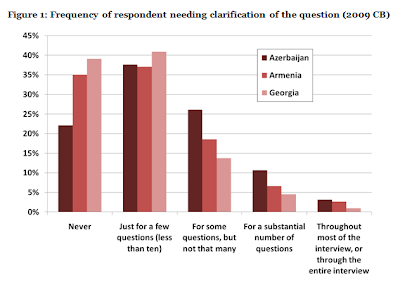While writing his PhD, Aleksey Hovakimyan was a regular user of CRRC-Armenia, often working in the computer lab or the library. We therefore were delighted to hear that his PhD thesis has now been published, and wanted to support him…
სომხეთი

What are the patterns in how the respondents are rated by the interviewers? The relevance of this question is beyond doubt, as patterns in such ratings allow for an idea of the reliability of the data as well as for…
Freedom House has just released its Nations in Transit report for the year 2010. The report attempts to quantify democratic development in Central European and Eurasian states by observing 8 separate factors – for instance, Electoral Process and National Democratic Governance –…
Last month we wrote a blog post on gender imbalance in the South Caucasus showing that there is an abnormal high number of boys being born in the region. Several comments were posted on the blog site that brought attention…
Earlier this month The Economist published two articles (article one, article two) on imbalances in gender. In all societies there is, at birth, a sex ratio slightly biased in favor of boys: 103-106 boys to 100 girls. The number evens out later on…
TIMSS, Trends in International Mathematics and Science Study, has released their report for 2007. TIMSS is conducted every four years and it reports on mathematics and science education for 4th and 8th graders in 59 countries. In 2007 Georgia participated…
Public schools in Yerevan face serious problems of restructuring. Most of the schools have not been renovated since the collapse of the Soviet Union. Does economic well-being affect the level of social capital in the neighborhood? Are the neighborhoods with…

Unemployment clearly is one of the pressing issues in the South Caucasus. But there is a lack of reliable data on people being without and looking for a job. This blog, based on CRRC’s Data Initiative 2007, provides a snapshot…
